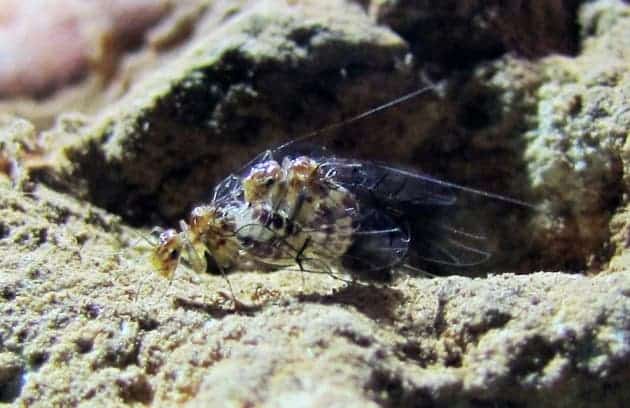A female insect has developed a spiky penis which it uses to get in charge . It’s a role reversal, basically: not only do the females have a penis, but the males have a vagina. The males still have sperm, but the female extracts it from the male vagina using its penis. Sounds strange, doesn’t it? Researchers thought so too.
What is the decisive factor when it comes to deciding if some animal is a male or a female? Hint: it’s not the existence or absence of genitalia. Another hint: it’s not even about the sex chromosomes, because that can get tricky in some situations. Nope, biologists rely on a simpler rule: the size of the gametes decides. As the rule goes, females are the sex that contribute the largest gametes (eggs), whereas males are the sex that contribute the smallest gametes (sperm).
In the desolate caves of Brazil, these insects copulate for days, with the females thrusting their genital organs into the males in an attempt to extract semen. It’s a weird, unique situation. Females still produce the eggs, which requires more energy consumption than producing sperm, but they also extract the sperm from the males. The reversal seems to go even deeper, as the females are promiscuous and aggressive, while the males are pretty picky.
“The female penis is a completely novel structure,” said Yoshizawa Kazunori, an entomologist at Japan’s Hokkaido University and co-author of the study. Except for producing the larger gametes and having an egg-laying apparatus, the females in these four species of winged insects, called Neotrogla, seem to have become “very masculine” over evolutionary time, Kazunori added. The appearance of such a novel structure is exceptionally rare, he said, and “may be comparable with the origin of insect wings.”
Not all animal species have a male penis, but a female penis is a first, says Yoshizawa. There should be a good reason for such an extreme adaptation, but scientists don’t know it yet. To make it even more strange, the process is apparently pretty painful and dangerous for the male. When the insects mate, the female mounts the male and penetrates deep into a thin genital opening in his back. Her organ starts to swell, and multiple spiky spines act as grappling hooks to anchor her tightly to the male. As Nature explains, when researchers tried to pull apart two mating insects, the female was gripping so tightly that the male was accidentally ripped in half, leaving his genitalia still attached to the female – that’s how tightly the spikes hold on.
But things get even weirder. Such a dramatic adaptation doesn’t occur all at once, and structures show a gradual change.
“Usually, a new structure evolves as a modification of a previously existing structure,” he said. But this female penis has no precedent. Evolving a structure like this, Yoshizawa said, is “exceptionally difficult” because the development of this form of mating would have necessitated the harmonious evolutions of both male and female genitalia, and their exact match.
The reason why the females developed a penis could be hunger; in the caves where they live, food is pretty scarce (usually consisting of bat droppings). Since producing eggs requires more energy, females found an alternative food source: the males’ mate’s semen capsule. This would also explain why they are more promiscuous – if they mate more, they eat more. Yoshizawa and his colleagues are now working on establishing a healthy population in the lab, so they can study the species in a controlled environment. The biggest problem is replacing their food – which is bat droppings.
Scientific Reference: Yoshizawa, K., Ferreira, R. L., Kamimura, Y. & Lienhard, C. Curr. Biol.http://dx.doi.org/10.1016/j.cub.2014.03.022 (2014).











